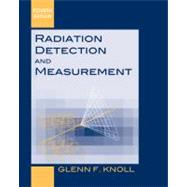The new edition continues to convey the importance of understanding the basic physics underlying the operation of instruments.
This is the resource that engineers turn to in the study of radiation detection. The fourth edition takes into account the technical developments that continue to enhance the instruments and techniques available for the detection and spectroscopy of ionizing radiation.
A new edition of the most comprehensive text/reference available on the methods and instrumentation used in the detection of ionizing radiation.
Updated to reflect advances since the first edition came out in 1979. Retains the general organization of the first edition--all topics of importance are covered in sufficient detail to lead the reader from basic principles to examples of modern applications. Covers modern engineering practice; provides useful design information; and contains an up-to-date and thorough review of the literature.
New coverage is presented on ROC curves, micropattern gas detectors, new sensors for scintillation light, and the excess noise factor.
Revised discussions are also included on TLDs and cryogenic spectrometers, radiation backgrounds, and the VME standard. Engineers will gain a strong understanding of the field with this updated book.








